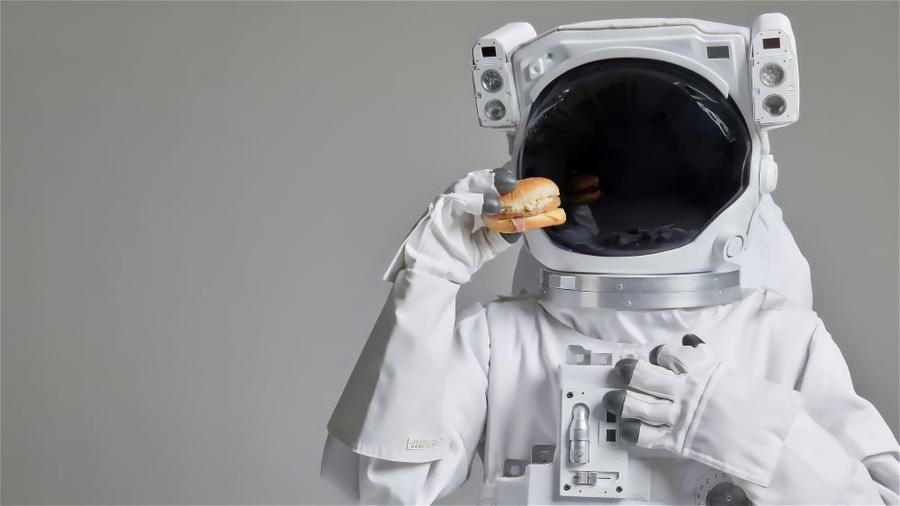What will astronauts eat during long missions in space?
Photo: Getty Images
NASA and Leidos are developing better food to fuel astronauts during long missions in deep space.
Why you should know: Food and nutrition are among the many challenges NASA faces in its goal to send humans back to the moon and beyond.
For long-duration trips, space travelers will need food light enough to launch and store in large quantities and safe to consume after several years in packaging.
Leidos scientist Kimberly Läte, who manages NASA’s Space Food Systems Laboratory in Houston, said the team recently updated the ISS standard menu with several new freeze-dried products like mango salad, curried pumpkin soup, crab bisque and couscous with nuts to fit the preferences of today’s astronauts and help avoid menu fatigue.
- “The way people eat has changed significantly since the mid-seventies,” she said. “The astronaut corps is by and large a very healthy group that desires a variety of food items delivering quality nutrition. We’ve worked hard on the advanced food technology side to develop these products and include them in the standard menu.”
Läte's said the team, which is led by NASA food scientists and includes several supporting companies, is developing new ways to balance taste, texture and nutritional value in food that can also withstand space travel for five years or more.
Läte and the Leidos team are supporting NASA on several key initiatives:
The Hurdle Approach study is a multi-year shelf-life study, combining advanced processing techniques, controlled temperature storage, and packaging materials to extend the shelf life of food in space.
- “When you package food, the biochemical reactions that reduce food quality and nutrition over time continue to happen, only at a slower rate,” says Läte. “Our work aims to limit things like oxygen penetration and water vapor transmission through packaging materials and combining processing techniques to extend shelf life, and we’re conducting nutritional analysis over specific timepoints to assess changes in nutritive value of the food over time.”
The Water Reduction Project is an effort to reduce water content in food, with the goal of reducing upmass (the weight of material launched into orbit) for long-duration vehicles which recycle water. The project will convert existing thermostabilized foods into freeze-dried products, evaluating the products over time to assess impacts to nutrition and quality.
- “When you freeze dry food, you’re removing about 98% of the water that was in the product,” she said. “This reduces mass, enabling you to carry less weight and launch more food into orbit. To accomplish this, we’re working to convert foods that were previously thermostabilized into freeze-dried products.”
The Suited Nutrition Hydration Contingency Project aims to feed and hydrate crewmembers when situations arise requiring the crew to wear pressurized space suits.
- “When crewmembers are in a transit vehicle, and if something happens to that vehicle, we need ways to get them the nourishment and hydration they need,” says Läte. “This project is all about helping crewmembers survive if they need to don pressurized suits for the return trip to Earth.”
Please contact the Leidos media relations team for more information.
Related:

